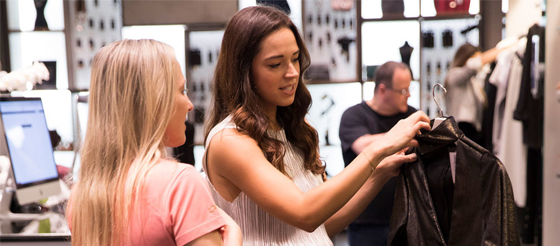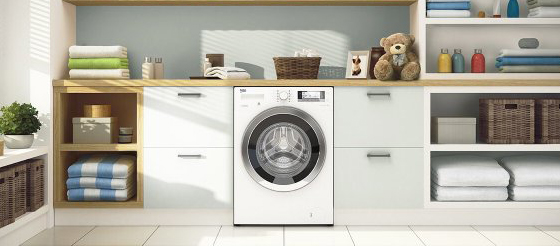
The high street is dying, or so we keep hearing from all angles of the media – but is it?
No. But it is evolving to meet the needs of generational shifts in shopping habits which retailers must adapt to in order to give consumers a desirable experience. Those that respond positively to shoppers and adapt, appreciate the increased value this change offers for potential survival.
Retail is no longer there to serve the customer, it’s the customer who decides if retailers remain relevant to the high street.
Those retailers that refuse to listen are deserving of their fate. It’s not a surprise or the fault of external factors when a major retailer, who failed to adapt, calls in the administrators. Social and economic factors are not going to ‘improve’ as they are proving to be the norm – it’s just how life is now – therefore boards of major retailers need to stop procrastinating and adapt fast.
With 89% of UK sales still generated through physical retail, the desire to shop on the High Street is still prevalent, retailers need to adapt creatively to capture a slice of those sales.
To believe that your exact same format which has been successful for decades remains relevant today is wrong. Millennials are bored with the same format. That’s why they’ve abandoned trusted retailers and by doing so, they are clearly stating that “it’s you, not them” that’s the problem.
Clashing styles
From traditional retail chains to independents and pop up stores, the ones that ‘get it’ are doing so to great effect. Whether it be through introducing speaker spaces within the store, to conducting free classes or work zones to encourage consumers to dwell and soak up the atmosphere. By also introducing other brands to coexist alongside your brand, is winning hearts and minds. Retail is changing. Changing positively but perhaps not fast enough to decrease the failures of trusted retail brands and reduce the vacant units on our high streets.
Debenhams tried this by introducing Patisserie Valerie cafes within their stores which proved fatal for both brands, partly due to their incompetence to manage their finances or understand the consumer. You don’t ‘accidently’ misplace £40m neither do you introduce a traditional patisserie into an already stale retail format such as Debenhams, in an attempt to entice new and younger shoppers. The opportunity to revive its fortunes could be taken from its past when it introduced designer names to its stable with huge success. Those designers are now only known by a generation who are 40+ and irrelevant to the shoppers needed to keep the Debenhams brand relevant on today’s high street.
With Arcadia group also struggling reputationally through the alleged actions of its high profile owner and also financially, they have a huge task ahead to transform. Reducing your retail footprint by closing stores to cut costs is not the solution, change is. But is it too late to turn some of Arcadia’s brands around?
Maybe not. The larger ‘flagship’ TopShop stores do it well by adopting shared spaces that offer consumers other brands or services like piercing or cosmetics to create an immersive shopping experience. Unfortunately, Topshop don’t seem to translate this successful format as well across the regions in the UK. Translating this ‘experience’ model across the entire estate is essential to relate to consumers who don’t necessarily have the means or desire to travel to a ‘flagship’ store.
Placing short term profit over evolution is short-sighted as this approach is somewhat ironic, a lack of investment makes you stale rather than revolutionary, making a brand irrelevant to today’s shopper.
Retailers assemble!
Those retailers who are winning have amalgamated, rather successfully, multiple brands under one roof that complement each other and often work in concert, to offer convenience for the shopper. Successful examples include the Argos purchase by Sainsbury’s and introducing Argos shop in shop (SiS) within larger Sainsbury formats and in 11 stores to include the desirable Habitat brand, which was snapped up by Argos several years back and now revived through the Sainsbury’s acquisition. This has enabled Sainsbury’s to continue trading within the non-food category and remain current without distracting from its core grocery business.
As the pioneer of mail order fashion, reimagining retail seems to come easy for Next who have successfully evolved its physical presence with the inclusion of SiS concepts in selected stores. Brands such as Lipsy, Paperchase, Henna and Costa can be found in the Next Oxford Street store and Mamas & Papas in its Bristol Cribbs Causeway store. Unsurprisingly this approach works for both anchor brand and SiS. With a staggering 2,481 stores disappearing off the High Street in 2018, the opportunity to split the overheads in tough economic times impacted by changing shopping habits, this is a successful combination for both retailer and shopper.
Those who complain that they can’t make retail work need look no further than their competition who are getting it right through understanding the zeitgeist. Shopping habits have changed with generational shifts and the glory days many failing retailers harp on about are not going to make a reappearance. It’s up to retailers to carve out a niche and appeal to the generations who now prefer both the physical and online aspects of retail, but are also seeking convenience and above all an experience.
Experience to try, taste, smell, learn, question, dwell to be part of something that transcends generations and the stereotypes of what ‘Retail’ should be. Retail can be whatever you want it to be.
Successful retail evolves to remain current and relevant to its audience. A retail renaissance is what we need.
To read the full article please visit The Drum.





